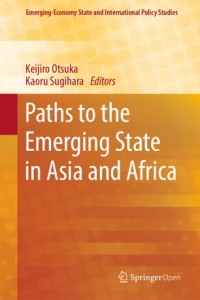
Department of Political ScienceAuburn UniversityAuburnUSA
This book is open access under a CC BY-NC-ND license. This book addresses the issue of how a country, which was incorporated into the world economy as a periphery, could make a transition to the emerging state, capable of undertaking the task of economic development and industrialization. It offers historical and contemporary case studies of transition, as well as the international background under which such a transition was successfully made (or delayed), by combining the approaches of economic history and development economics. Its aim is to identify relevant historical contexts, that is, the ‘initial conditions’ and internal and external forces which governed the transition. It also aims to understand what current low-income developing countries require for their transition. Three economic driving forces for the transition are identified. They are: (1) labor-intensive industrialization, which offers ample employment opportunities for labor force; (2) international trade, which facilitates efficient international division of labor; and (3) agricultural development, which improves food security by increasing supply of staple foods. The book presents a bold account of each driver for the transition. Keijiro Otsuka is Professor of Economics, Kobe University and Kaoru Sugihara is Specially Appointed Professor of the Research Institute for Humanity and Nature.This book is open access under a CC BY-NC-ND license. This book addresses the issue of how a country, which was incorporated into the world economy as a periphery, could make a transition to the emerging state, capable of undertaking the task of economic development and industrialization. It offers historical and contemporary case studies of transition, as well as the international background under which such a transition was successfully made (or delayed), by combining the approaches of economic history and development economics. Its aim is to identify relevant historical contexts, that is, the ‘initial conditions’ and internal and external forces which governed the transition. It also aims to understand what current low-income developing countries require for their transition. Three economic driving forces for the transition are identified. They are: (1) labor-intensive industrialization, which offers ample employment opportunities for labor force; (2) international trade, which facilitates efficient international division of labor; and (3) agricultural development, which improves food security by increasing supply of staple foods. The book presents a bold account of each driver for the transition. Keijiro Otsuka is Professor of Economics, Kobe University and Kaoru Sugihara is Specially Appointed Professor of the Research Institute for Humanity and Nature.
Book Format
Free
Reviews
Rating Snapshot
Select a row below to filter reviews.
0
0
0
0
0
0
Overall
Average Customer Ratings
Review for this Book
Share your thoughts with other readers
More Information
Description of Department of Political ScienceAuburn UniversityAuburnUSA
This book is open access under a CC BY-NC-ND license. This book addresses the issue of how a country, which was incorporated into the world economy as a periphery, could make a transition to the e
Additional Information
About the authors
Keijiro Otsuka(editor)
Table of content
Recommended Books
Based on the books you like and read























